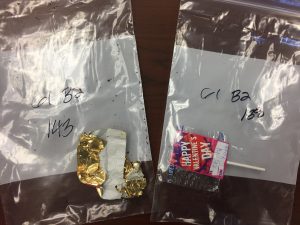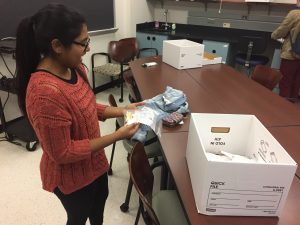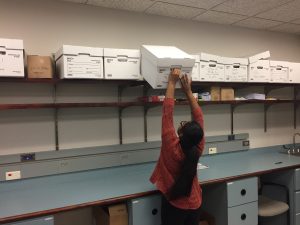Our class were split into two groups of about 6 each, we were assigned four rubbish bags originally, however we were only able to dismantle and record three of them. Our group was split into two: indoor and outdoor. The outdoor group was in charge of removing the trash from the bags, then to record and label them into general groups (i.e. glass bottles, plastic bottles, miscellaneous, etc.) while the indoor group did more rigorous segmenting and then finally boxed them. This helped with efficiency a lot and we were able to cover a lot of ground in the hours he had available to us.

This is the outdoor location where we emptied the bags and started to record the items that were found.
There were a variety of types of trash, including recyclable content and also compost. The recyclable content was easier to segment and label, however when we had to take care of the compost, the stench was much harder to deal with. There were remains such as lettuce and other sandwich contents. There were also cat excrements which were rather difficult to deal.Even though the process was rather disgusting, it was still important since it gave us insight into the household’s lifestyle and dietary habits.

The labelling shows how we sectioned all the items of the three bags that we looked into. These ones contain a lollipop and chocolate wrappings.
The items were then brought indoors to be measured. Items that were difficult to measure, such as the compost, were weighed. Nearly all items were placed into little sachets such as the ones in the pictures. They were then labelled in the order we used (Group number, garbage bag number, and item number – G,B,I).

Measuring sizes of items that we picked from the bags.

Identifying and boxing items after having grouped them outside.
After all the items had been recorded and bagged, we stored them into boxes by sub-category. So items that were related to a certain sub-category could be more easily identified if there was something recorded that would want to be looked at. For example, if we wanted to identify dietary samples again, we could easily do so by looking at the content with a sub-category of compost.

We stored the items in boxes which were stored in our classroom for later reference.